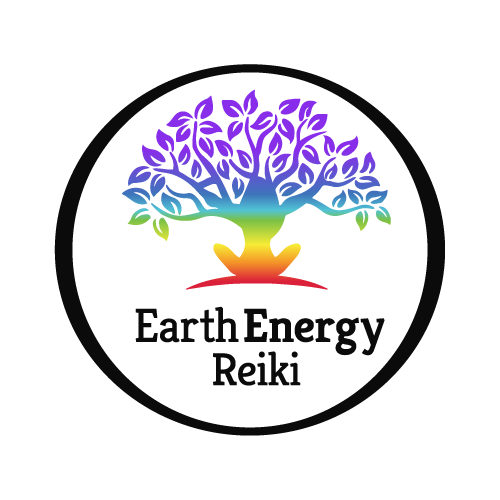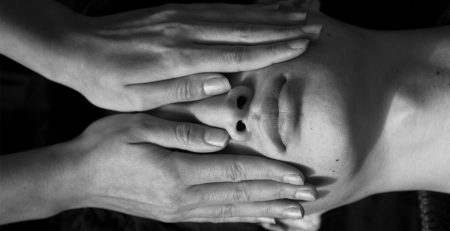Everything you need to know about Reiki
Reiki is a form of complementary therapy relating to energy healing. Proponents say that it works with the energy fields around the body and involves the transfer of universal energy from the practitioner’s palms to the client.
Some controversy surrounds Reiki, as clinical research has not proven its effectiveness. However, many people who receive Reiki claim to experience positive outcomesTrusted Source.
In this article, we explain what Reiki treatment involves, its reported health benefits, and the medical opinions surrounding it.

The word “Reiki” means “mysterious atmosphere, miraculous sign.” It comes from the Japanese words “rei,” meaning universal, and “ki,” meaning life energy.
Reiki is a type of energy healing. According to practitioners, energy can stagnate in the body where there has been physical injury or even emotional pain. In time, these energy blocks can cause illness.
Energy medicine aims to help the flow of energy and remove blocks in a similar way to acupuncture or acupressure. Reiki practitioners believe that improving the flow of energy around the body can enable relaxation, relieve pain, speed healing, and reduce other symptoms of illness.
Mikao Usui developed Usui Reiki Ryoho, the most current form of Reiki, in 1922. However, people have practiced Reiki for about 2,500 years.
People also refer to Reiki as palm healing or hands-on healing.
Practitioners will typically give Reiki treatment in a peaceful, private setting. However, the treatment can take place anywhere. During a session, the client will sit in a comfortable chair or lie on a table, fully clothed.
The practitioner will then place their hands lightly on or over specific areas of the client’s head, limbs, and torso. They will typically keep their hands in these positions for 3–10 minutes.
If there is a particular injury, such as a burn, the practitioner will hold their hands just above the wound.
Advocates state that while the practitioner holds their hands lightly on or over the body, an energy transfer takes place. During this time, the practitioner may report that their hands feel warm or are tingling. They will hold each hand position until they sense that the energy has stopped flowing.
When the practitioner feels that the heat, or energy, in their hands has gone, they will remove their hands and place them over a different body area.
Some Reiki techniques
The techniques that Reiki involves have names such as:
- centering
- clearing
- beaming
- extracting harmful energies
- infusing
- smoothing and raking the aura
Some Reiki practitioners will use crystals and chakra healing wands to enable healing or protect a home from negative energy.
However, Annie Harrington, chair of the Reiki Federation of the United Kingdom, told Medical News Today:
“Reiki relies on no other instruments beyond the practitioner. We do not use crystals, powders, or wands as a general rule. However, one of the benefits of Reiki healing is distance healing, where Reiki is sent over several miles. Then, many practitioners will use crystals to assist with the energy vibrations.”
Sessions can last 45–90 minutes. The number of sessions will vary, depending on what a client wishes to accomplish. Some clients prefer to have one session, while others have a series of sessions to work on a particular issue.
Health benefits
According to practitioners, Reiki channels universal energy known as ki, pronounced “chi.” This is the same energy involved in tai chi exercise.
This energy supposedly permeates the body. Reiki experts point out that although this energy is not measurable with modern scientific techniques, many who tune into it can feel it.
Reiki allegedly aids relaxation, assists in the body’s natural healing processes, and develops emotional, mental, and spiritual well-being. However, no studies have conclusively shown this to be true.
Some anecdotal evidence suggests that it may induce deep relaxation, help people cope with difficulties, relieve emotional stress, and improve overall well-being.
Conditions that people have used Reiki to help treat include:
- cancer
- heart disease
- anxiety
- depression
- chronic pain
- infertility
- neurodegenerative disorders
- autism
- Crohn’s disease
- fatigue
It is important to note that Reiki should never take the place of medical treatments.
However, people living with certain health conditions may be interested in trying Reiki alongside their regular treatment. For instance, some people with cancer may find Reiki beneficial as it may help them relax. The gentle nature of Reiki therapy may have a soothing effect on patients who find that they become overwhelmed with invasive therapy, fear, and stress.
Individuals report different experiences. Some say that the practitioner’s hands become hot, others report cooling hands, and some feel pulsating waves. The most common reports are of a release of stress and deep relaxation.
Becoming a Reiki practitioner
No prior training, education, or experience is necessary to enter the Reiki training or “attunement process.”
In this process, the Reiki master reportedly transfers the attunement energy and healing techniques to the student.
Reiki training varies, but most students learn about:
- the energies around the body
- how to work with healing energy
- the ethics of working with clients
Preparation for attunement includes fasting for 1–3 days, meditation, focusing on nature, and releasing negative emotions.
There are three levels of mastery. Those who reach “Master” level can teach others and can reportedly heal from a distance.
Reiki’s healing power: What is the evidence?
Although Reiki is growing in popularity, there is little evidence that it provides any clinical benefit.
Practitioners claim that Reiki can enable relaxation, reduce pain, speed healing, and improve some symptoms. However, few research findings support any specific health benefits.
Critics say that it flies in the face of our current understanding of the laws of nature. However, some limited studiesTrusted Source have drawn links between Reiki and a reduction in feelings of pain and anxiety.
Scientists note that high quality research into its effectiveness is lacking. According to the National Center for Complementary and Integrative Health, no study has shown Reiki to have any health-related benefit.
In 2015, a review of studies on Reiki and the treatment of anxiety and depression concluded that there was “insufficient evidence to say whether or not Reiki is useful for people over 16 years of age with anxiety or depression or both.”
Of the few studies that the review assessed, most were of low quality, with small sample sizes, no peer review, or no control group, according to the authors.
In contrast, a review article in the Journal of Evidence-Based Complementary & Alternative MedicineTrusted Source found “reasonably strong support” for Reiki being more effective than a placebo in reducing pain and anxiety in people with chronic health conditions. However, the author of the review is a member of the Australiasian Usui Reiki Association, so bias is possible.
More recently, Annie Harrington told MNT that the U.K. Reiki Federation currently has a “large document cataloging many research trials.”
Regulatory issues: Time for a change?
Regulatory authorities sometimes ask Reiki websites to change their information to conform with legal standards. Sites selling Reiki products may carry a legal disclaimer, stating that the products are not medical devices intended to diagnose, heal, or prevent disease.
In the U.K., the Advertising Standards Agency has rejected claims that Reiki can heal a range of diseases on a number of occasions.
Is Reiki harmful?
Due to the non-contact nature of Reiki, this treatment is not harmfulTrusted Source.
However, Reiki could lead to harm if people with serious health issues opt for this therapy and other complementary therapies instead of rigorously tested modern medicine.
A person using Reiki alongside other treatments is unlikely to encounter negative side effects.
Where can I get Reiki?
More than 800 hospitals in the United States currently offer Reiki services for patients.
In the U.K, some medical providers, such as hospices, may have volunteers who provide it free of charge as part of palliative care.
A private Reiki session can cost between $25 and $100. A person’s insurance may not cover Reiki treatment.
Anyone seeking a qualified, professional Reiki practitioner should be cautious, as few regulations govern this field. It can help to ask a practitioner about their training and experience.
Reiki is not an alternative treatment for medical issues but a complementary therapy that may help support healing and increase a feeling of well-being for some people.
It is always best to discuss any complementary therapies with a doctor before trying them.
Summary
Reiki is a complementary form of energy therapy. Advocates believe that there is an energy field around the body and that disrupting it can lead to ailments. Reiki therapy aims to remedy these disruptions and the subsequent conditions.
In Reiki treatment, practitioners will place their hands over various parts of a person’s body and transfer healing energy.
During a session, practitioners may focus their energy on the sources of specific conditions. Typically a single treatment session will last 45–90 minutes.
Research has not shown Reiki to have any direct healing properties. However, some clients claim that Reiki helped reduce stress and anxiety when they used it as a complementary treatment.
A person should always consult their doctor before engaging in complementary therapies.






Leave a Reply